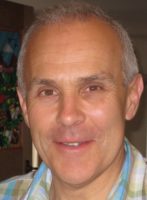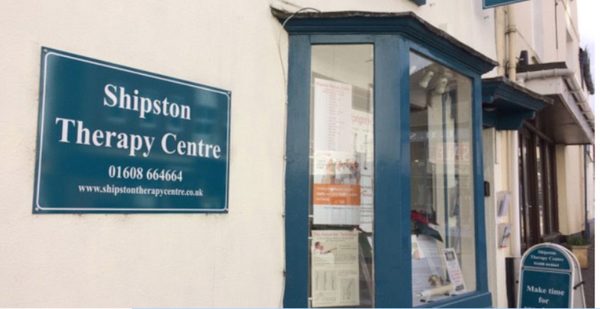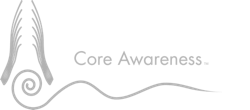Martin Grasby is a licensed Acupuncturist and certified Bowen therapist with a thriving clinic in Warwickshire, England. Martin attended his first psoas workshop in 2004 in the UK and later journeyed to Mexico to participate in the 10-day Professional Application Course. Instrumental in hosting workshops in the UK, Martin introduced me to leaders in the somatic, health, and bodywork fields. In February 2007, we co-authored an article “Balancing Your Internal Climate,” which focuses on understanding the psoas from an elemental, expressive, and energetic perspective. It was published in the United Kingdom Positive Health Magazine. (an online version is available at both Core Awareness™ and at The Positive Health website http://www.positivehealth.com/article/chinese-oriental-medicine/balancing-your-internal-climate. With Martin’s recommendation, I was invited to be the Keynote Speaker at the International Bowen Conference in London (2008) where I had the opportunity to present my “Stalking the Wild Psoas: Changing the Language of Body from Object to Process.” I have a deep appreciation for Martin and his British sense of humor. It’s been a great pleasure to witness how he has challenged his personal and cultural conditioning in order to embody his somatic knowing, develop his professional skills, and flourish in both love and life.

Tell the readers a little about why you trained as an Acupuncturist and then as a Bowen practitioner. What in particular drew you towards these two particular forms of work?
Ever since I first experienced acupuncture, I was fascinated by how such minimal intervention could bring about profound results on multiple levels. The time came when I felt my career was due for a change and it was one of those moments of “knowing;” what I really wanted was to study 5 Elemental Acupuncture. It felt right, no question about it, though I was unsure of what exactly I was going into.
Bowen came along some years later when a friend, who was just starting as a Bowen teacher, invited me to join her for a course. Again, I was struck by this minimalistic approach that could achieve seemingly unlikely results. All sorts of issues miraculously resolved. Coming from an engineering background, I felt challenged by the somewhat esoteric nature of both these two therapies. At first, I couldn’t necessarily see what was happening but clearly something was occurring, and the clients knew it too. Now I trust this process and the part I have in it. Ultimately it is the body’s own unfolding which seems to be gently prompted into action.
Explain to our readers your outlook on healing and health. In what ways does the Five-Element Theory and Chinese Medicine shape your outlook on life?
Being from a conventional background it took time for me to eventually come to realize and appreciate the value of the individual, synchronistic functioning of the body, and that nothing happens in isolation. 5-Element Acupuncture has nature at its root. It expounds that we should be in tune with the cycles of life and its natural laws. For example, as Spring follows Winter so too in 5 Element principles Wood follows Water with their interdependent impulse of energy. If the cycle is interrupted then, as the Classics predict, illness results. In other words, what occurs externally in nature also occurs internally within our selves. Similar to the ups and downs of the natural environment, we too have our internal variable landscape.
Bowen is a very gentle hands-on treatment that affects acupuncture meridians. Its effect on fascia is also currently being explored and readily accepted as valuable. Whilst I don’t often combine the two, I find in my practice that they inform, develop, and deepen one another’s application.
 Please elaborate on your professional goals. Explain to the reader what you focus on with clients and why it is important to your work.
Please elaborate on your professional goals. Explain to the reader what you focus on with clients and why it is important to your work.
The conventional medical model often tells patients nothing more can be done. It tells them that they’ll be on medication or in pain for the rest of their life or that surgery is their only option. This may of course be true, but I have found many conditions can be improved or, at the very least, there are ways to help the patient find an inner resilience to handle what they’re coping with. It is said that we shouldn’t give false hope, but clients should not be given false despair either.
I’ve noticed that many people are physically unaware and that unless they’re in pain they have little concept of how their body is functioning. And in a sense why should they feel anything else? Through various approaches many of my clients actually become interested in what is happening and why. Bodywork can be a subtle way of connecting with oneself and nature without the need to verbalize.
How & why has the psoas played an important part in your professional and personal life?
An acupuncture teacher once told me “if a client wakes up with a painful or stiff low back it might be their psoas muscles.” Later I discovered Liz Koch’s work with the psoas and from 2004 on was lucky enough to host her UK visits. This opportunity led to experiencing and understanding that this tissue has more than just a mechanical function. Muscle memory and emotions are there to be discovered and learned from. An important insight I had from learning her approach is that we should work respectfully with the psoas and indeed with the whole person. It’s too easy to think we know best as to how our client’s body and mind should be. Forcing change invariably leads, at best, to only temporary relief. Fortunately, both Acupuncture and Bowen enables the body’s innate wisdom and potential to be realized. My time in the treatment room is always an ongoing process as I continue to learn from my clients. Most of my clients are now familiar with the Constructive Rest Position and the Core Awareness™ website as an additional reference.

What have you gained from working with Liz Koch’s approach to the psoas?
This work introduced me to how profound a subtle approach towards the core tissue can be. I find more and more people are in “fight or flight” mode — not on the front line of a war zone but in the busyness of life: deadlines, financial worries, relationship issues, social media, competitive sports. They are in a constant state of low level trauma and thus exhausting their psoas, the messenger of the autonomic nervous system. I remember Liz saying, “Don’t shoot the messenger” and this is a constant reminder to me that the last thing they need is a deep, invasive intervention that only adds to their trauma.
